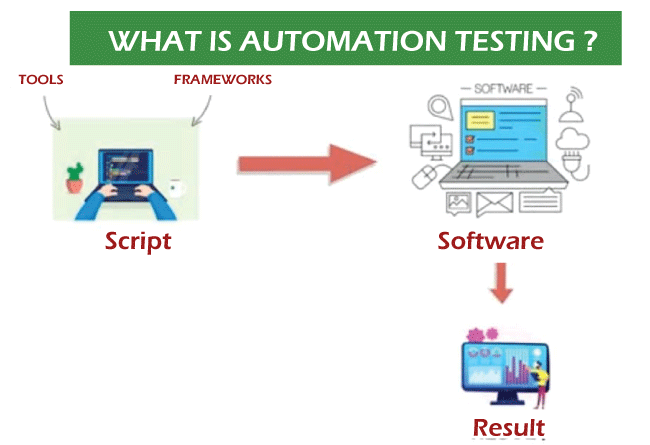Ensuring Success in Automation Checking: Key Metrics, Difficulties, and Solutions Every QA Group Should Know
In the realm of software application top quality guarantee, the landscape of automation screening is ever-evolving, requiring a thorough strategy to make certain smooth procedures. The trip to understanding automation screening is paved with nuances that need an eager eye for surveillance, evaluation, and continuous enhancement. As the sector moves ahead, the mission for optimum performance in automation screening remains a constant quest, urging QA groups to furnish themselves with the knowledge and approaches essential for victory.
Value of Key Metrics
Recognizing the importance of crucial metrics is vital for reviewing the efficiency and efficiency of automation testing procedures. Key metrics function as measurable steps that provide beneficial insights into numerous aspects of the screening process, such as examination protection, test implementation time, problem thickness, and test case effectiveness. By evaluating these metrics, QA groups can recognize bottlenecks, ineffectiveness, and locations for enhancement within their automation testing structure.
One essential facet of crucial metrics is their ability to track progression and keep an eye on the total wellness of the testing procedure (automation testing). They allow stakeholders to make enlightened decisions based upon data-driven insights, which can bring about a lot more efficient screening methods and better resource allocation. In addition, vital metrics can assist teams set realistic objectives, gauge the success of automation initiatives, and demonstrate the ROI of automation testing efforts

Common Obstacles Faced
Obstacles commonly run into in automation testing procedures can considerably impact the overall efficiency and efficiency of QA groups. Among the significant difficulties is the choice of the ideal examination instances for automation. Not all test instances are appropriate for automation, and selecting the wrong ones can cause thrown away time and resources. Furthermore, preserving test manuscripts can be an overwhelming job, specifically as the application goes through regular modifications. Test script upkeep requires continuous updates and modifications to guarantee they show the present performance precisely. Another usual difficulty is the preliminary financial investment needed for establishing up automation frameworks and tools. This can be a barrier for some organizations, particularly smaller sized ones with minimal budgets. Automation testing may not cover all facets of testing, such as functionality and customer experience testing, which still require manual treatment. Overcoming these obstacles requires appropriate preparation, tactical examination instance choice, durable maintenance processes, ample resources, and a clear understanding of the constraints of automation testing.
Reliable Solutions for Difficulties
To address the barriers encountered in automation screening, executing efficient options is crucial for enhancing the efficiency and productivity of QA teams. One key option is to purchase robust training programs for QA groups to guarantee they have the needed abilities to properly use automation tools. Training can connect knowledge gaps, improve understanding of automation structures, and boost scripting capacities, ultimately causing a lot more effective examination creation and execution.
One more important solution is to establish clear communication channels within the QA team and with other stakeholders, such as programmers and project managers. Reliable interaction helps in aligning expectations, sharing progression updates, and without delay dealing with issues or roadblocks that might develop throughout the automation testing process.

Monitoring and Analysis Strategies
Implementing reliable surveillance and evaluation techniques is important for making sure the success and effectiveness of automation testing processes. By utilizing monitoring tools, QA groups can track the efficiency of examination manuscripts, recognize traffic jams, and identify locations for renovation. Real-time surveillance allows for quick discovery of problems, enabling quick feedback and resolution. In addition, evaluating examination outcomes and metrics offers valuable understandings into the quality of the software program being checked and the efficiency of the testing approach.
One secret technique in tracking and analysis is using dashboards that consolidate pertinent metrics and KPIs in an aesthetically obtainable style. These dashboards supply an extensive review of test implementation condition, examination coverage, anchor flaw trends, and other vital details. Consistently examining and examining these dashboards can assist QA teams make notified choices, prioritize jobs, and optimize screening initiatives.
Additionally, implementing automated signals and alerts based upon predefined thresholds can improve proactive tracking and prompt treatment. By establishing up alerts for efficiency deviations or test failures, teams can attend to concerns without delay and prevent them from intensifying. Generally, surveillance and evaluation strategies play a vital role in making certain the effectiveness and success of automation testing campaigns.
Continual Enhancement Methods
Enhancing the effectiveness of automation testing processes demands the constant refinement of techniques and approaches. Constant improvement approaches are crucial for go to the website QA groups to adapt to developing technologies and supply high-grade software. One essential technique to improving automation testing processes is to conduct normal evaluations and retrospectives. By examining previous testing cycles, teams can identify bottlenecks, inefficiencies, and locations for improvement. Applying comments loops and incorporating lessons found out into future screening frameworks can generate substantial enhancements with time.

Final Thought
To conclude, it is crucial for QA teams to understand the essential metrics, difficulties, and services in automation testing to make certain success. By meticulously keeping track of and evaluating information, applying efficient options to typical challenges, and continually boosting strategies, QA teams can maximize their testing processes and deliver premium software application look at this web-site products. Adhering to these practices will ultimately bring about extra efficient and effective automation screening techniques.
By examining these metrics, QA groups can determine bottlenecks, inadequacies, and areas for improvement within their automation screening framework.
Additionally, essential metrics can aid groups established realistic objectives, gauge the success of automation initiatives, and show the ROI of automation testing efforts.
Obstacles commonly encountered in automation testing processes can substantially influence the overall efficiency and efficiency of QA teams. Automation screening might not cover all facets of screening, such as use and user experience testing, which still require manual intervention.In conclusion, it is important for QA groups to recognize the vital metrics, obstacles, and solutions in automation screening to ensure success.
Comments on “Effective Automation Testing: Enhancing Software Reliability and Rate”